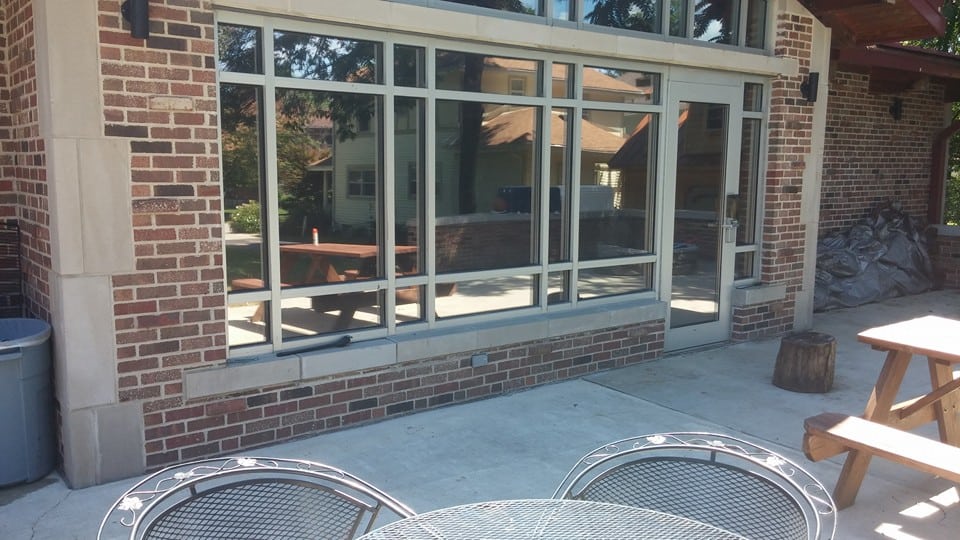Window Film is FUN
July 26, 2022Everything You Need to Know About Installing Ceramic Window Film on Tesla Model 3
July 28, 2022The window film world is complex and isn’t common knowledge. Installing flat window film either for your business or home is a huge investment that shouldn’t be taken lightly. It should involve a lot of thought, research, and consultations to make an informed decision. Besides understanding how window film is made and how it’s installed, you need to know how to choose the right flat window film supplier.
Whether you need window film to protect your windows, increase privacy, or reduce glare, this post provides many answers to your questions. Read along to learn everything you want to know about flat window film.
What is Flat Window Film?
Flat window film refers to a polyester coating applied to flat glass windows. Flat window film is mainly installed to reduce the amount of sunlight that passes via the glass or increase privacy. Almost all types of window film have a polyester film at the base produced from PET (Polyethylene Terephthalate). PET is a combination of monoethylene glycol and terephthalic acid, all found in petroleum.
While the final product is thin, polyester window films are strong and tough, providing excellent stability when exposed to extreme conditions of moisture and temperatures.
What are the Benefits of Flat Window Film?
The benefits of installing flat window film go beyond light reduction. Window film that provide other benefits, including:
- Rejects up to 99% of the sun’s harmful UV rays
- Reduces glare
- Increases level of privacy
- Rejects up to 80% of the sun’s solar energy
- Prevents shattering when glass is broken
- Prevents fading of upholstery, carpets, and interior furnishings
How is Flat Glass Window Film Different from Automotive Film?
One common question is whether flat window film designed for commercial and home windows can be used for car windows. Well, the truth is both automotive films applied on cars and trucks and flat glass film applied on exteriors of windows and doors in buildings serve the same purpose—reduce glare, increase privacy, and enhance safety and security. However, you cannot use one in place of the other. That means flat window film can only be installed in residential or commercial windows but not in vehicles. That said, here’s how flat window film differs from automotive window film:
Flat Glass Window Film Does Not Shrink
Automotive window film is shrinkable, allowing it to curve when installed on the car window surface. This property is not necessary for flat glass film as it is applied to a flat surface. Trying to install automotive window film on flat surfaces can cause breakage.
Film Composition Differs
Automotive window film is designed to absorb heat, while flat glass film reflects heat. Glass window films come with metallic compounds that reflect heat to keep your space cool and comfortable. Metallic compounds work well for residential and commercial windows but can cause electronic interference when used on car windows. Automotive window tint films are specifically designed to reduce any electronic interference in the car, which is unnecessary in buildings.
Under no circumstances should you use automotive tint film on residential or commercial buildings because the shrinking and absorption properties can increase the risk of your windows cracking.
Flat Glass Window Film is Not Regulated
Last but not least, automotive tints are highly regulated in most countries. Of course, the purpose of installing architectural and automotive window films is the same—blocking harmful UV rays, adding privacy, and blocking excess heat and glare. Nevertheless, flat films can be much darker or more reflective than car tint films to provide more privacy and block more solar energy and light.
On the other hand, car windows are regulated, and depending on your area, they cannot block more than 65 percent of visible light. The reason why the automotive film is regulated is for safety purposes. After all, blocking too much light will block vision when on the roads, which will put your life and other road users at risk.
What’s the Difference Between Regular and Ceramic Flat Window Film
Architectural window films come with many benefits, but not all flat window films are created equal. Before settling on a window film for your home or office, understand the difference between regular and ceramic window film.
What is Regular Window Film?
Regular window film refers to the sheets of window film dyed in different colors. These sheets of film are made from polyester or laminate materials and then dyed in varying shades to provide different levels of window tinting.
Black is the most common shade of regular window film, although it comes in gray, brown, and other colors. The levels of regular tinting (gradations) range from 10% to 90%—the lower the percentage, the darker the shade. Regular window films are primarily used to block sunlight.
What is Ceramic Flat Window Film?
The world of window film has grown significantly over the years. We have experienced advanced window film technologies over the recent years, including the emergence of ceramic film.
Like regular window films, ceramic window films are made from polyester or laminate-based sheets and come in different shades and colors. However, the ceramic film is coated with ceramic particles.
Ceramic window films increase privacy and block visible sunlight but have an added advantage over regular window film—it reduces glare, block harmful UV rays, and reflect heat to improve your window’s performance.
As you can see, ceramic-coated window film has more benefits than regular window film. Regular window film won’t reflect UV rays or heat. They can make your space hotter than it should or even cause your windows to crack or break. Ceramic window film is more durable than regular window film. If you’re looking for a flat window film that guarantees protection against UV rays and heat, ceramic-coated window film is your best bet.
Does Flat Window Film Come in Different Colors?
Yes, flat window films come in a variety of colors. To get a better understanding of these, let’s look at the different types of window film:
Decorative Window Film Color Options
Decorative window film is a category of flat window film designed for privacy and decorative purposes. Options in this category include whiteout window film, frosted window film, blackout window film, among others. This window film category does not come in different colors. Still, there are a variety of patterns and shapes to select from, including circles, stripes, and other exciting shapes to give your space an elevated look.
Solar Film Colors
Flat solar window film is mainly designed to protect from fading, heat, and glare. When it comes to solar film colors, it’s more of shades than colors. These shades provide a particular level of protection against glare, heat, and ultraviolet rays but come in different hues to differentiate them. You can get some with more blue, green, or gray hue than others.
The ceramic flat window film contains no metal, giving you a clearer option. Ideally, there are many options to select from when it comes to solar window film, depending on your needs and preference.
Can You Install Flat Window Film to Plexiglass?
This is another common question people ask about flat window film. Only a few window films can adhere to plexiglass; most won’t. Many window films are designed for standard glass and won’t adhere to plexiglass.
If you are unsure whether your office or home has standard or plexiglass, talk to us, and our film professionals will help. They will check your windows and recommend the best window film for your specific windows.
How Long Will It Take for Flat Window Film to Dry?
The time of the year when you install window film will significantly impact the drying time. The dry time will be shorter in warm and sunny weather than in cold and non-sunny weather.
Since some safety and security window films have increased thickness, they need a more extended dry-out period. Depending on the weather and the film thickness, the dry-out period can range from a few days to several months.
How Does Flat Window Film Last?
Different window films are made from varying materials that determine their lifespan. How your window film is installed will also determine how long it will last.
High-quality window film provides up to 15 years of warranty for commercial installation and a lifetime warranty for residential installation. Depending on the type of window film and where your house is located, your flat window film can go past its warranty. Some of the issues covered by the factory warranty include:
- Cracking
- Peeling
- Bubbling
- Adhesive failure
Ask your window film installer about the warranties provided to better understand what’s covered and what’s not.
Is it Right to Install Window Film on Tinted Glass?
Tinted glass absorbs heat, leading to a lot of stress within the glass. Window film also absorbs heat to some degree. Combining the two can increase thermal stress, causing glass breakage.
Thermal stress is likely to occur if the film is not installed correctly, for instance, if the glass edges are damaged. However, glass cracking will unlikely occur if the tinted glass is tempered or strengthened.
Before you install window film to tinted glass, talk to tinting professionals to ascertain whether it is safe to install flat window film on your tinted windows.
Can Window Film Cause Glass Breakage?
The truth is that the wrong window film can cause your glass to crack. This is especially the case if the film absorbs too much heat. Before installing window film, consider whether your glass is a single pane or dual pane, as there are specific window films for each.
What is the Best Way to Clean Flat Window Film?
High-quality window films come with a scratch-resistant coating that protects the film from normal wear and tear. Even so, you should be careful when cleaning the surface of the glass to prevent possible film damage. Here’s how to go about cleaning window film:
- Use plain soapy water or normal household glass cleaning solutions
- Dry the glass using soft glass or soft rubber squeegee—be careful when using the squeegee to avoid gouging the film
- Use soft clean, lint-free towels to apply cleaning solutions
- Avoid cleaning solutions that contain materials like baking soda. Also, avoid using razor blades or anything sharp.
Wrapping Up
There you have it. Those are the important things you should know about flat window film. If you need more clarification on what we’ve covered in this post or have any specific questions regarding flat window film, contact us today, and our team will get back to you.

